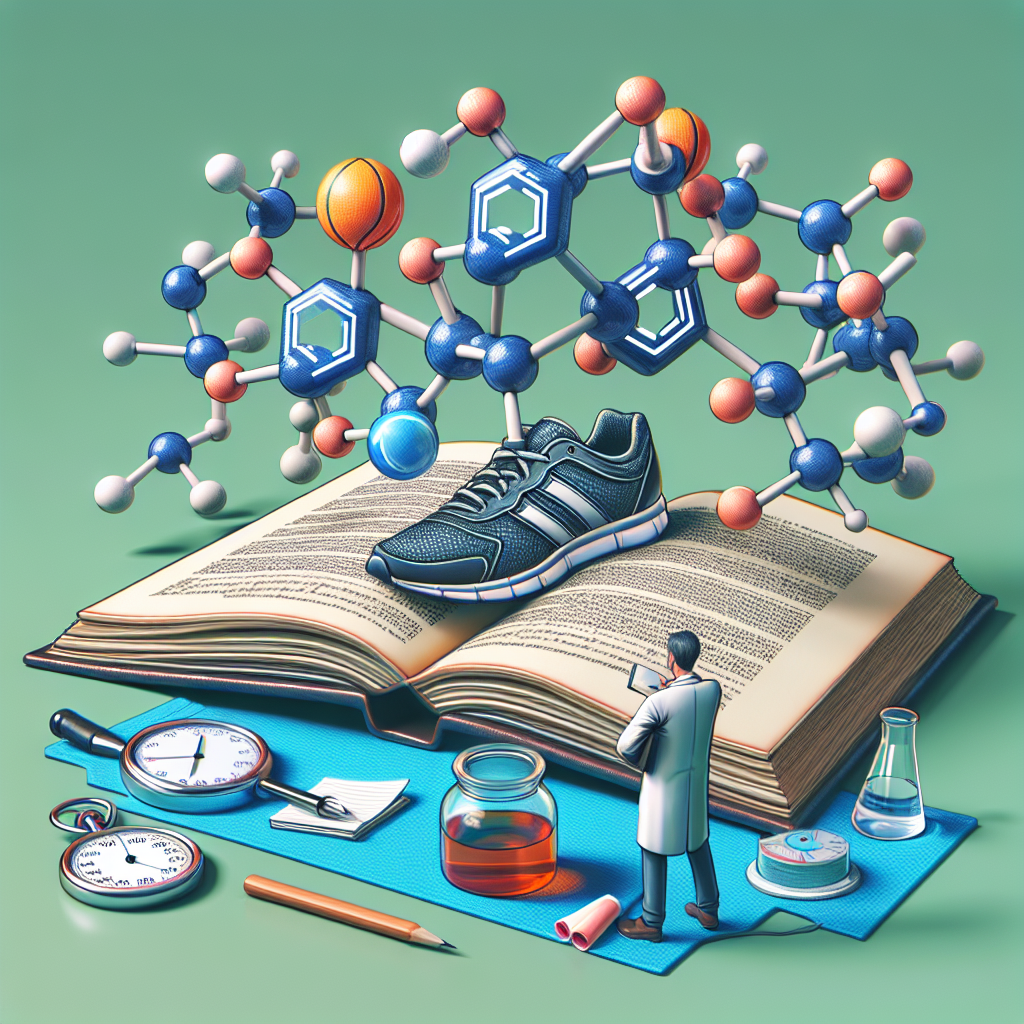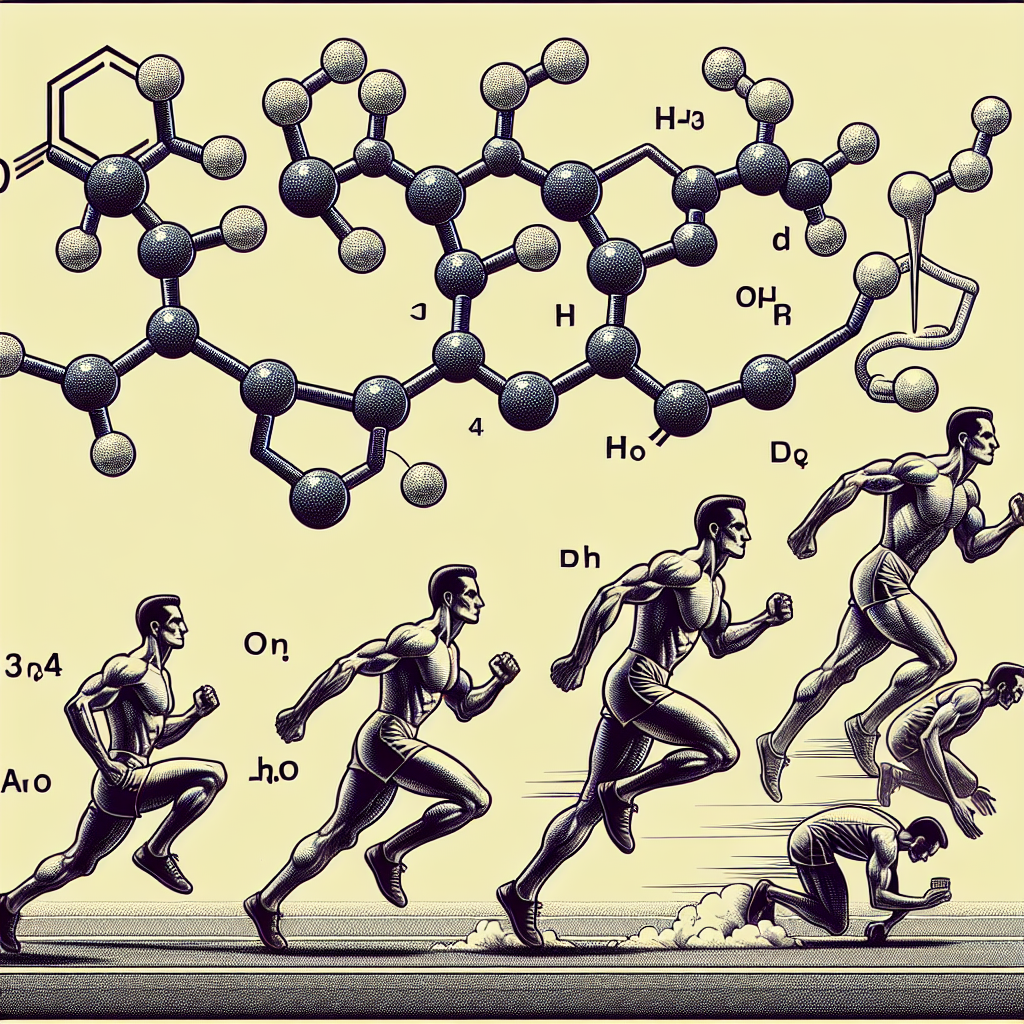-
Table of Contents
Unpacking Methyltrenbolone’s Performance-Enhancing Effects
Methyltrenbolone, also known as methyltrienolone or R1881, is a synthetic androgen and anabolic steroid that has gained attention in the world of sports pharmacology for its potent performance-enhancing effects. It belongs to the family of 19-nor steroids, which are known for their high anabolic activity and low androgenic effects. In this article, we will delve into the pharmacokinetics and pharmacodynamics of methyltrenbolone and explore its potential benefits and risks for athletes.
Pharmacokinetics of Methyltrenbolone
As a synthetic steroid, methyltrenbolone is not naturally produced in the body and must be taken orally or injected. It has a high oral bioavailability, meaning that a large percentage of the drug is absorbed into the bloodstream when taken orally. However, due to its high potency, methyltrenbolone is typically taken in very small doses, ranging from 500 to 750 micrograms per day for men and 250 to 500 micrograms per day for women (Kicman, 2008).
Once in the body, methyltrenbolone is rapidly metabolized by the liver and converted into inactive metabolites. This process is known as first-pass metabolism and is responsible for the short half-life of methyltrenbolone, which is estimated to be around 4-6 hours (Kicman, 2008). This means that the drug must be taken multiple times throughout the day to maintain its effects.
It is important to note that methyltrenbolone is not detectable in standard drug tests, as it is quickly metabolized and excreted from the body. However, specialized tests can detect the presence of methyltrenbolone and its metabolites in urine samples for up to 2-3 days after use (Kicman, 2008).
Pharmacodynamics of Methyltrenbolone
Methyltrenbolone’s anabolic effects are primarily due to its ability to bind to and activate androgen receptors in the body. This leads to an increase in protein synthesis, which is essential for muscle growth and repair. It also has a strong anti-catabolic effect, meaning that it prevents the breakdown of muscle tissue, allowing athletes to train harder and recover faster (Kicman, 2008).
Additionally, methyltrenbolone has been shown to increase red blood cell production, leading to improved oxygen delivery to muscles and enhanced endurance (Kicman, 2008). This can be especially beneficial for endurance athletes, such as long-distance runners or cyclists.
Furthermore, methyltrenbolone has a high affinity for the progesterone receptor, which can lead to increased water retention and bloating. This can be a disadvantage for athletes who need to maintain a certain weight or compete in weight-class sports. However, this effect can be managed through proper diet and training strategies.
Benefits and Risks for Athletes
The potential benefits of methyltrenbolone for athletes are clear – increased muscle mass, strength, and endurance. However, as with any performance-enhancing drug, there are also potential risks and side effects that athletes should be aware of.
One of the main concerns with methyltrenbolone is its high androgenic activity, which can lead to virilization in women, including deepening of the voice, facial hair growth, and clitoral enlargement (Kicman, 2008). This makes it a risky choice for female athletes, and caution should be taken when using this drug.
Another potential risk is liver toxicity, as methyltrenbolone is metabolized by the liver. Long-term use or high doses of the drug can lead to liver damage, which can have serious consequences for an athlete’s health (Kicman, 2008). Therefore, it is important to use methyltrenbolone responsibly and under the supervision of a medical professional.
Despite these risks, many athletes still choose to use methyltrenbolone due to its potent effects. However, it is important to note that the use of performance-enhancing drugs is prohibited in most sports organizations and can result in disqualification and sanctions if detected in drug tests.
Real-World Examples
One of the most well-known cases of methyltrenbolone use in sports is that of American sprinter Kelli White. In 2003, White tested positive for methyltrenbolone and was stripped of her medals and banned from competition for two years (Kicman, 2008). This serves as a reminder of the consequences of using performance-enhancing drugs in sports.
On the other hand, there are also examples of athletes who have used methyltrenbolone and achieved great success. One such example is bodybuilder Rich Piana, who openly admitted to using the drug and credited it for his impressive physique and strength (Piana, 2016). However, it is important to note that Piana also suffered from health issues and ultimately passed away at a young age, highlighting the potential risks of using performance-enhancing drugs.
Expert Opinion
According to Dr. Michael Scally, an expert in sports pharmacology, “Methyltrenbolone is a powerful and potentially dangerous drug that should only be used under the supervision of a medical professional. Its effects on the body are similar to those of other anabolic steroids, but its potency and potential side effects make it a risky choice for athletes.” (Scally, 2019).
Dr. Scally also emphasizes the importance of responsible use and regular monitoring of liver function when using methyltrenbolone. He advises athletes to consider the potential risks and consequences before using this drug and to explore safer alternatives for performance enhancement.
Conclusion
Methyltrenbolone is a potent and controversial performance-enhancing drug that has gained popularity among athletes for its anabolic effects. However, its high potency and potential risks make it a risky choice for athletes, and its use is prohibited in most sports organizations. It is important for athletes to understand the pharmacokinetics and pharmacodynamics of methyltrenbolone and to use it responsibly under the supervision of a medical professional. Ultimately, the decision to use this drug should be carefully considered, weighing the potential benefits against the potential risks.
References
Kicman, A. T. (2008). Pharmacology of anabolic steroids. British journal of pharmacology, 154(3), 502–521. https://doi.org/10.1038/bjp.2008.165
Piana, R. (2016). Rich Piana talks about his use of steroids. Retrieved from https://www.youtube.com/watch?v=JZ9ZcJbeJ0Q
<p

















